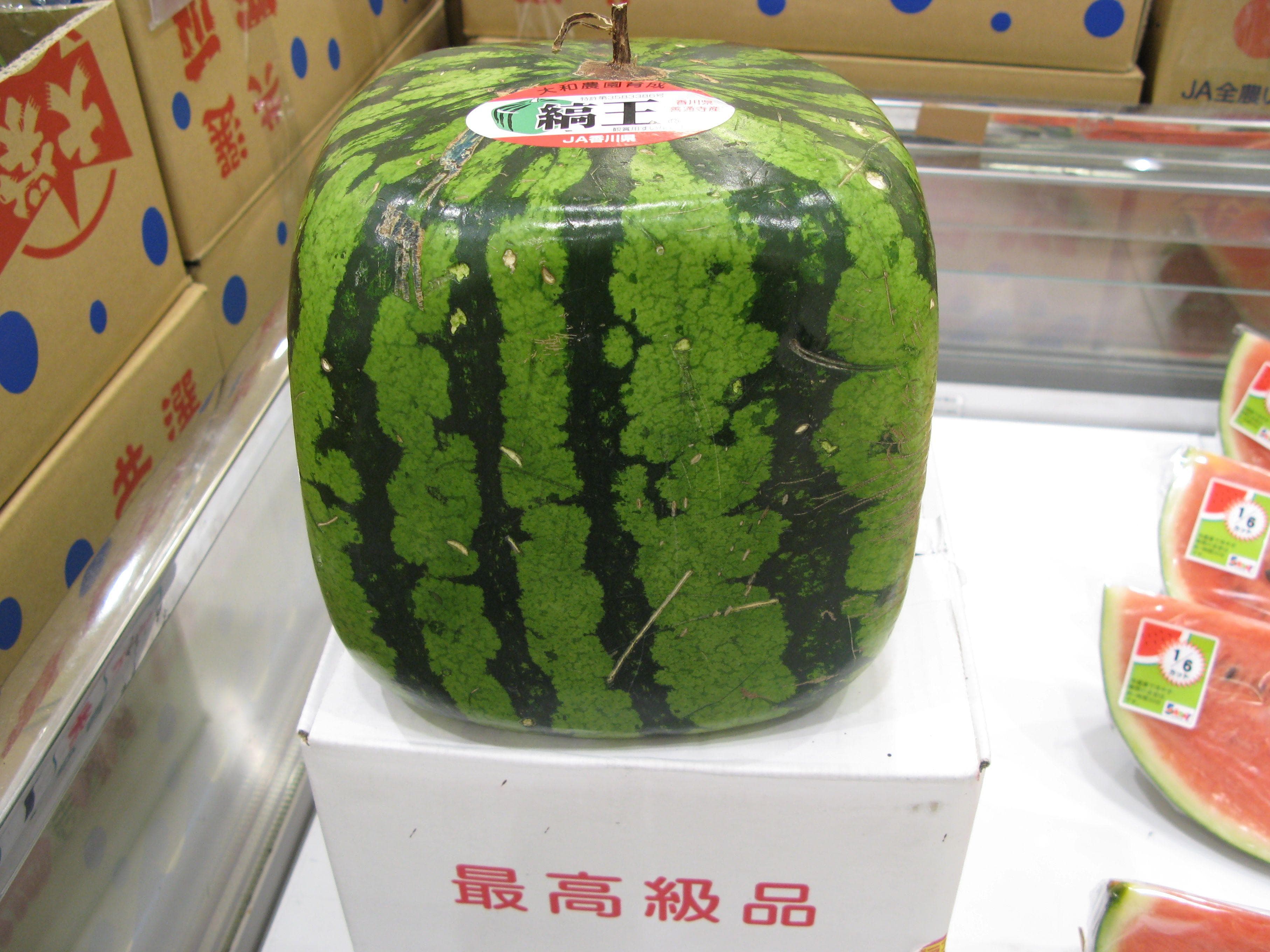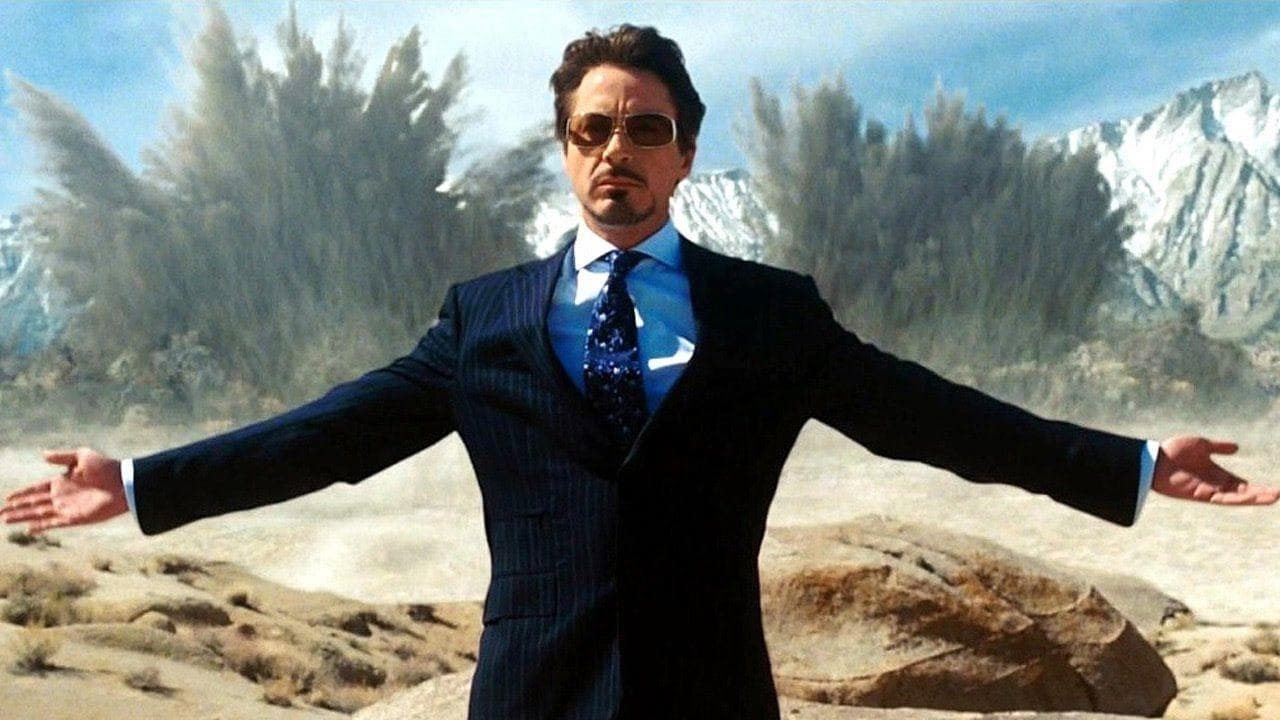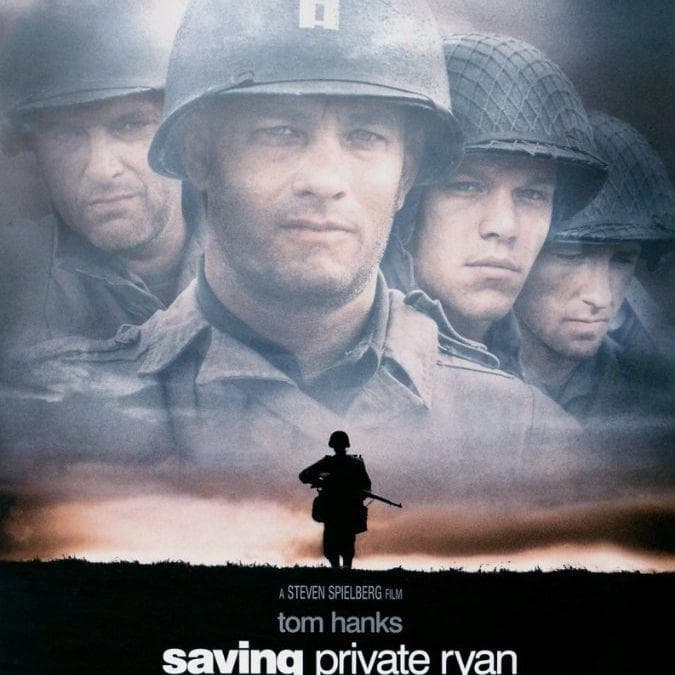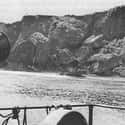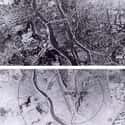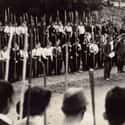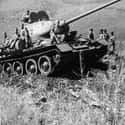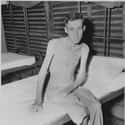-
(#1) Japanese Citizens Feared US Soldiers Would Rape and Torture Civillians
The Japanese public was told by its government that invading American soldiers would act like pillaging marauders. Given the behavior of Japanese soldiers during the Rape of Nanking and that of Soviet soldiers during the "three days of rape and pillage" in Mukden, such a scenario wasn't far-fetched. Tragically, this belief led many Japanese civilians to commit suicide, rather than face capture by Allied forces.
Events during the Battle of Okinawa demonstrate the extent of this belief. Civilians had been hiding for days in one of the island's caves when American troops arrived. Two young boys charged from the cave wielding bamboo spears and were shot dead. The American troops then attempted to coax the civilians out of the cave, dropping leaflets in Japanese that explained how civilians would be treated well, and with respect. But the people in the cave feared this was misleading propaganda.
An 18-year-old girl named Haru Uechi reportedly shouted, "Mommy, kill me! Don't let them rape me!" The mother obliged, setting off a mass suicide in the cave. Parents killed their children, then themselves. Some of the bones from this incident remain to this day, a grim reminder of horrors that were in no way isolated to that small cave.
-
(#2) Civillians Committed Mass Sucicides
The Battle of Saipan bore witness to one of the most atrocious mass suicides of the war. Hundreds of Japanese civilians jumped from the cliffs of Marpi Point, on the north part of the tiny Pacific island, to their death. Others blew themselves up with grenades. In total, 1,000 civilians are estimated to have committed suicide on the island.
Shinsho Kuniyoshi survived the mass suicides. His family joined a group of about 70 who were debating suicide. They attempted to use hand grenades, which were given to civilians for the express purpose of suicide with loved ones, but the blasts weren't strong enough to kill them all. Those who remained, including Kuniyoshi, jumped from the cliffs into the sea. Kuniyoshi survived the fall, along with his father, who, upon seeing Kuniyoshi alive, decided against suicide so as not to leave his son alone.
Speaking to The Japan Times, Kuniyoshi said, “War is a monster that tears up happy lives,”
-
(#3) Japanese Civillians Were Under Constant Threat of Allied Firebombing
All told, the Allied strategic bombing campaign caused more death and destruction in Japan than the atomic bombs. During one raid in March 1945, more than 300 B-29 Superfortresses dropped two tons of incendiary bombs each on Tokyo's industrial centers. The resulting firestorm destroyed more than 15 square miles of the city. For comparison's sake, the island of Manhattan is about 23 square miles.
With working-class neighborhoods located adjacent to the factories, the loss of life and property was enormous. In the first six hours of the firestorm created by the bombs, more than 100,000 Japanese civilians died. In that month alone, three more such fire bombing raids took place. In the absence of proper air raid shelters, Japanese civilians hid in glorified holes dug in backyards and parks.
-
(#4) Thanks to Propaganda, Many Japanese Soldiers and Civilians Thought They Were the Good Guys
The Imperial Army pushed the narrative that Japan was liberating its Asian neighbors from Western powers. Though the treatment of the native populations by their Japanese colonists painted a different picture, it didn't stop the government from spreading the propaganda. Roughly translated, one pamphlet reads:
Currently, in Manchuria, everyone has begun to combine their power and work. Japan and China formed an alliance. The Philippines and Burma became independent. Thailand grew larger. The people of Java, Malay, and others, too, will, by important duties, come together to work. India, too, has driven out England. From now, we will make the countries of Greater-East-Asia friendly to one another.
-
(#5) Hundreds of Thousands Died from the Atomic Bombs, and Two Cities Were Completely Destroyed
On August 6, 1945, the Enola Gay B-29 Superfortress released its deadly cargo in the skies above Hiroshima. The atomic bomb, dubbed Little Boy, leveled the city, killing 80,000 people instantly. Still, the Japanese did not surrender. Three days later, a second bomb, dubbed Fat Man, was dropped on Nagasaki, killing 40,000 instantly. In the following months, 100,000 more died of radiation poisoning. All told, a third to half of the citizens of Hiroshima died as a result of the bombing.
About 63% of the buildings in Hiroshima were destroyed by the bomb, and 92% were eventually torn down, being deemed unstable or useless. Nagasaki was almost completely flattened; nearly all the buildings not destroyed by the blast were consumed by fire.
-
(#6) Soldiers Engaged in Suicide Charges Rather Than Surrender
Colloquially referred to as "banzai charges," these attacks came when Japanese soldiers ran out of ammunition or otherwise faced imminent defeat. American troops faced the first banzai charge during the Thousand-Mile War in the Aleutian Islands in 1943. Japanese soldiers at Chichagof Harbor on Attu charged the American lines, bayoneting sleeping soldiers, then killing themselves if they could not break through. Soldiers were trained so that if they heard the command “Tenno Haika! Banzai!" (“Long live the Emperor! Ten thousand ages!"), they would charge en masse.
-
(#7) Japanese Civilians Were Taught to Fight with Bamboo Sticks
As the end of the war loomed and Japanese military leaders knew all was lost, civilians on the Japanese mainland were trained to fight to the death in the event of an American invasion. This group of civilians, called the Volunteer Fighting Corps, was formed in March of 1945 as a last ditch effort to protect the Japanese homeland. Initially, units were to be used in support roles, and woudl be composed of men and women over the age of 12. However, the groups were reformed as militia units to be composed of any male between the ages of 15 and 60, as well as any female between the ages of 17 and 40. Most were armed only with swords or bamboo spears.
-
(#8) There Were Fears Emperor Hirohito Would Order All Civilians to Commit Suicide
In the minds of the Japanese military apparatus during World War II (and in keeping with the samurai code of bushido), there was no such thing as surrender. Because of this, in 1945, there were legitimate fears among the Japanese people that Emperor Hirohito would order the 100 million, the Japanese propaganda machine's name for civilians on the mainland, to commit suicide. Such a mass suicide has been described, in keeping with Japanese aesthetics of fatalism and beauty in impermanence, as "... a death that would be beautiful in its tragedy, 'like shattered jewels.'"
When Hirohito made his now-famous Jewel Voice Broadcast, which declared Japan's surrender (without actually mentioning surrender; how Japanese), it was unclear in the lead up to to the announcement whether he would order said suicide or a surrender. A scene in Akira Kurosawa's final film, Madadayo, depicts the moments leading up to the broadcast, and the anxiety felt throughout Japan.
-
(#9) A Desperate Japan Military Resorted to Kamikaze Tactics
Capt. Motoharu Okamura is credited with coming up with the idea to send Japanese pilots on one-way suicide missions, but it was Vice-Admiral Takijiro Onishi who formed the Special Attack Force (Tokkotai in Japanese). The pilots in the squad took on the moniker kamikaze, meaning "divine wind" and referring to the storms that destroyed the Mongol navy when it tried to invade Japan in 1274 and 1281.
Their first mission took place during the fall of 1944, less than a year before Japan's surrender, and involved a group of 23 pilots during the Battle of Leyte Gulf. The kamikaze were most active during the Battle of Okinawa, in which they incapacitated two aircraft carriers and sunk several destroyers. In total, nearly 3,000 kamikaze attacks took place, damaging 368 ships and sinking 34 of them. Startlingly, only about 14% of kamikaze attacks managed to hit their targets.
-
(#10) 600,000+ Japanese Soldiers Were Killed or Captured by Soviets After Japan Surrendered
The same day the atomic bomb was dropped on Nagasaki, the Soviet Union invaded the Japanese puppet state of Manchukuo, in China. Japan's Kwantung Army was completely overrun by Soviet forces, which included 89 divisions with 1.5 million men, 3,704 tanks, 1,852 self-propelled guns, 85,819 vehicles and 3,721 aircraft. Comparatively, the entire Kwantung Army only had about 700,000 troops, 1,215 armored vehicles, 6,700 artillery pieces, and 1,800 aircraft, all of which were outmatched by the newer Soviet hardware.
As for the emperor's announcement of surrender on August 15, much of the Kwantung Army either didn't understand or refused to believe the order. The cease-fire was not properly communicated to the army until August 18. During the fighting, 21,000 Japanese soldiers were killed, and about 600,000 taken prisoner. Only about half of the POWs captured by Soviets survived to return to Japan.
-
(#11) The Jewel Voice Broadcast Forever Changed Japan (and Caused a Fair Amount of Confusion)
When Emperor Hirohito announced Japan's surrender via the Jewel Voice Broadcast, it was the first time he, or any Japanese emperor, addressed the common people, and the first use of mass media to directly disseminate the voice of a Japanese emperor. Because the Japanese believed the emperor to be a god on Earth, this was a very big deal.
The content of Hirohito's announcement was radical, and forever altered the structure of Japanese society, changing the country from a top-down authoritarian state to a modern socialist nation. He said Japan aimed "To strive for the common prosperity and happiness of all nations, as well as the security and wellbeing of our subjects."
The announcement also purportedly caused tremendous confusion. The broadcast wasn't a direct address, but rather the playing of a previously recorded phonograph with pretty bad sound quality. On top of that, Hirohito used formal Japanese, which plebs neither spoke nor understood. If all that weren't enough, Hirohito never used the word "surrender." Add all that up and you have a pretty good recipe for confusion.
However, as per Robert Guillain, a French journalist who was in Japan when the announcement was made, accounts of confusion are exaggerated. Firstly, the broadcast included a clarification that Hirohito was in fact announcing Japan's surrender, in case anyone missed that point. According to Guillain, most Japanese civilians received the message in stunned silence and returned to their homes to digest it, in private and quiet, for several hours.
-
(#12) Some Japanese Soldiers Were Essentially Strapped To Explosives
The Ohka, one of the primary tools used by kamikaze, was a one-man plane, essentially a pilot-guided missile. Its name means "cherry blossom," and it's the only plane ever designed to kill its pilot. The nose of the plane was filled with explosives, and the pilot attempted to crash the plane into Allied ships. The Ohka wasn't used in battle until 1945, and was a desperate measure to kill as many enemy soldiers and destroy as many Allied ships as possible as inevitable defeat loomed.
The propulsion system of the Okha was a short-ranged rocket, which meant it had to be carried to its target by heavy bombers. This was the Ohka's fatal flaw; most were shot down before they arrived at the US fleet.
Japan also employed manned torpedoes. Called Kaiten, suicide torpedoes housed a sailor, who steered the weapon toward a target. Kaiten were initially designed with an escape hatch, but the feature was later removed due to disuse. Once a person entered the Kaiten, his fate was sealed.
-
(#13) Japan's Largest Battleship, the Yamato, Was Sent on a Suicide Mission
By the end of the war, even the largest battleship ever built was being sent on a last-ditch suicide mission. On April 6, 1945, the Yamato left port in Tokyo with a small escort to head for the Battle of Okinawa. It was given only enough fuel to make it there. Orders were to fight until the ship was incapacitated, and then scuttle the ship in the shallows and continue to bombard the allied fleet with its long range guns.
The Yamato never reached Okinawa, however. It was intercepted en route by US Task Force 58, which included five heavy and four light aircraft carriers. From these ships, 227 aircraft were scrambled with orders to sink the Yamato. After a day of fighting and several direct hits from bombs and torpedoes, the battleship sank. It took with it 3,000 crew members.
-
(#14) Japanese Leaders Realized the War Was Lost But Sought to Avoid Unconditional Surrender
While much of the top brass in the Japanese military insisted upon a fight to the death, in April 1945, new leadership took office in Japan, led by Kantaro Suzuki, with the mission of seeking to end the war. Decoded transmissions indicate these officials sought a path to negotiating terms of surrender, and considered using the Soviet Union, neutral Portugal, and neutral Sweden as possible brokers. The US State Department believed, by this point, that Emperor Hirohito had even taken a role in the push for peace.
The United States, however, insisted on unconditional surrender. The main sticking point seemed to be Japanese insistence on protecting the Emperor. They feared he would be tried as a war criminal and executed. When Japan finally agreed to unconditional surrender, the Emperor was neither tried or executed, for a number of complex reasons.
-
(#15) Tuberculosis Was a Major Problem on the Home Front
Tuberculosis, a bacterial infection that most commonly affects the lungs, was a major problem in Japan from when the country first started industrializing in 1895 all the way through World War II. Contracting the disease was viewed as a death sentence, and those afflicted were generally only admitted to a sanitarium near the very end. Families tried to hide diseased relatives, further contributing to its spread.
It was not until after the war, when medicine and better treatment methods were introduced by Allied occupiers, that rates of the disease fell. The introduction of streptomycin in 1948 marked a turning point for the treatment of the disease in Japan.
-
(#16) Japan Decapitated and Worked To Death POWs
To say the Japanese treated prisoners of war poorly would be an understatement. POWs were decapitated or otherwise executed for arbitrary reasons, and tortured in sadistically imaginative ways for reasons as stupid as "stealing" fruit from trees in the jungle. The Burma railroad provided ample opportunity to be worked to death. The Bataan Death March was just that, taking the lives of thousands. Transport ships holding POWs were not identified, and at least 10,000 POWs died on them as a result of allied attacks.
The treatment was so bad, Allied command was reluctant to believe it was true. The situation became most dire at the end of the war, when the Japanese were running out or rations and weren't sure whether to simply abandon their POWs or kill them. Initially, the impulse among Allied leaders was to dismiss rumors of such treatment as the result of a few rogue commanders. It wasn't until 1945, when substantial numbers of POWs were freed in Burma and the Philippines, that the true extent of the brutality was understood.
New Random Displays Display All By Ranking
About This Tool
Wars are cruel. During World War II, Japanese militaries invaded other countries brutally, not only causing heavy damage to the invaded countries but also to their own economy, society, and people. On August 15, 1945, the Emperor of Japan announced through radio that they were willing to accept the "Potsdam Convention" and immediately implement unconditional surrender, which marked the end of World War II.
Japan, which has just ended the war, was on the verge of collapse in its domestic society and economy, the cities are full of ruins left by war, and with such a large number of troops after the war, the Japanese government simply cannot feed them. The random tool lists 16 desperate realities for Japan at the end of the war.
Our data comes from Ranker, If you want to participate in the ranking of items displayed on this page, please click here.


